On Wednesday, I made a trip out to a coastal region of North Carolina, specifically the Wilmington/Fort Fisher area – not my first choice of beachy areas, but I had a reason to be out there that wasn’t photo-related. Nonetheless, I left early and managed to be out at Fort Fisher shortly after 7 AM, seeing what the morning held.

I took a little opportunity to be fartsy while looking for the species that can only be found coastally, like the boat-tailed grackle (Quiscalus major) appearing at the top of the scrub here – I can’t call it driftwood because it grew right there and is still firmly anchored. The grackle itself wasn’t too concerned about my presence and allowed a surprisingly close approach while chuckling and clattering its morning calls.
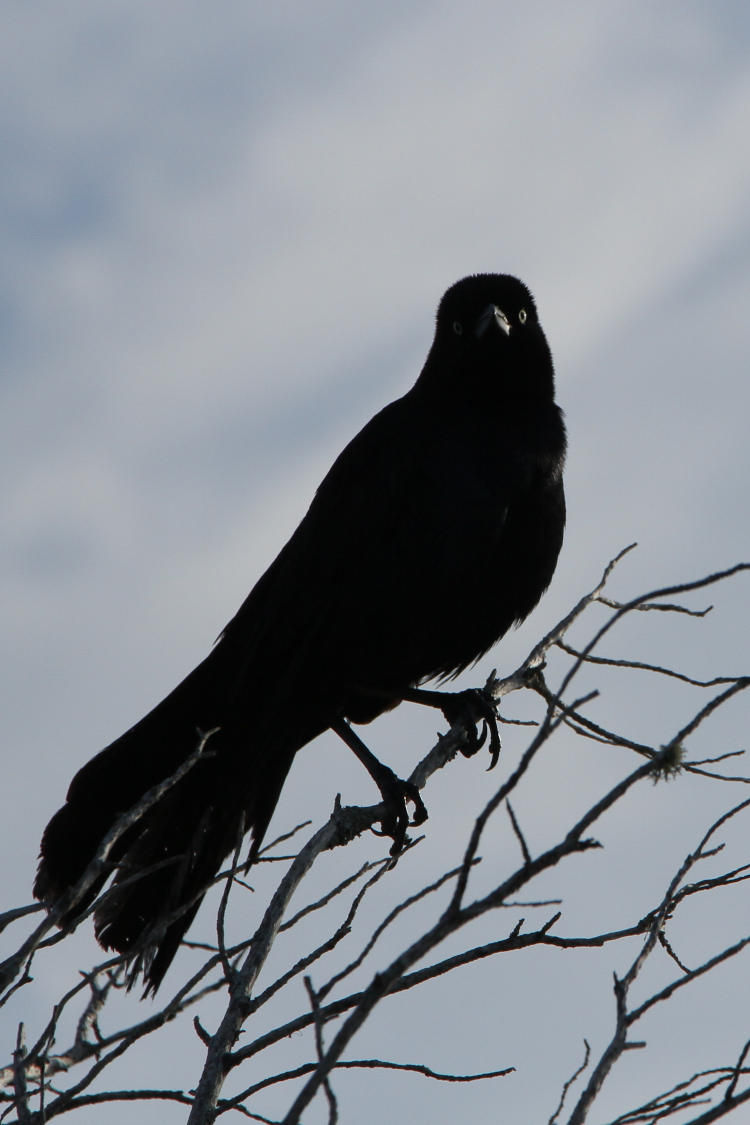
The sun angle wasn’t ideal and I forgot to dial in some compensation for the sky, but I liked the eyes peering from the silhouette, so I kept this one. Considering that I was only using a 135mm focal length here, you get a decent idea of how close I was. The bird remained there long after my approach, undoubtedly used to touristas.
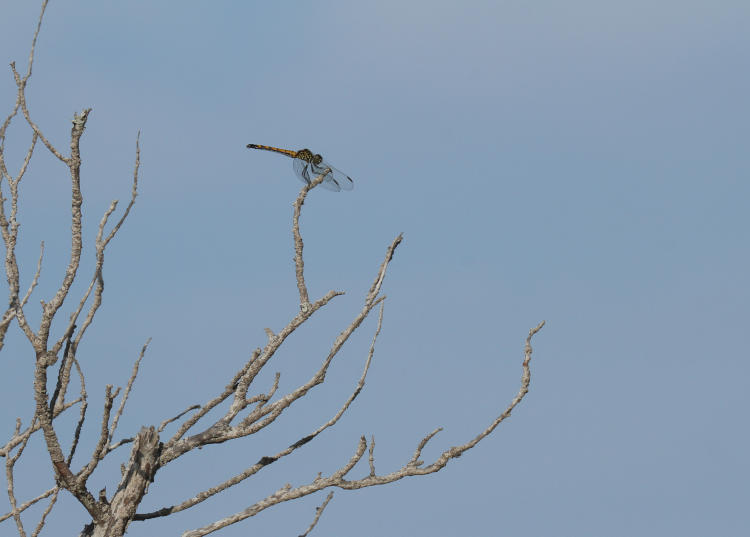
This is about a half-size crop, making use of the stark branches – the dragonfly may be a female blue dasher (Pachydiplax longipennis,) but I won’t swear by it.
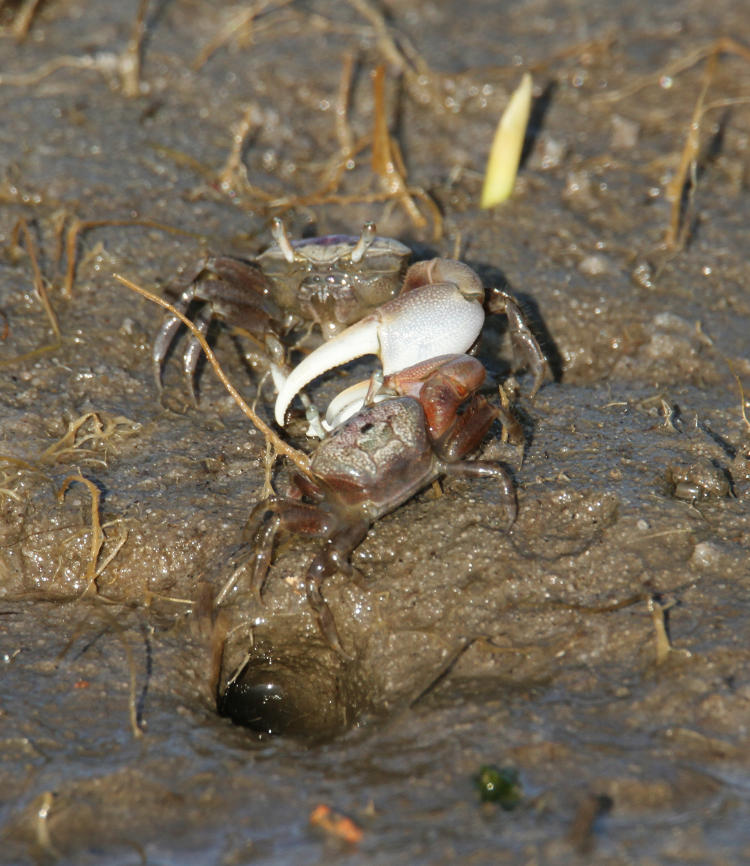
It was low tide, and the fiddler crabs were out in force – more or less. Generally, the mud flats ahead of me would show sudden subtle movements on my approach as the multitudes of crabs (genus Ocypodidae – there are dozens of species and I’m not going to try to identify these) took cover at the sight of me, but waiting motionless for no more than a minute would reveal them peeking back out of their burrows again, and soon afterward they’d be out foraging or, in this case, engaging in a mild territorial dispute, pretty much just bumping one another in the most lame of encounters – that’s the burrow of the smaller one right there in the foreground. One of these days I intend to do some detailed video, but I had no ground pad nor sunscreen and the sweat was already dripping down my spine. Next time.
Brown pelicans (Pelecanus occidentalis) were gliding by out over the Cape Fear River, and I did a few shots as they passed.
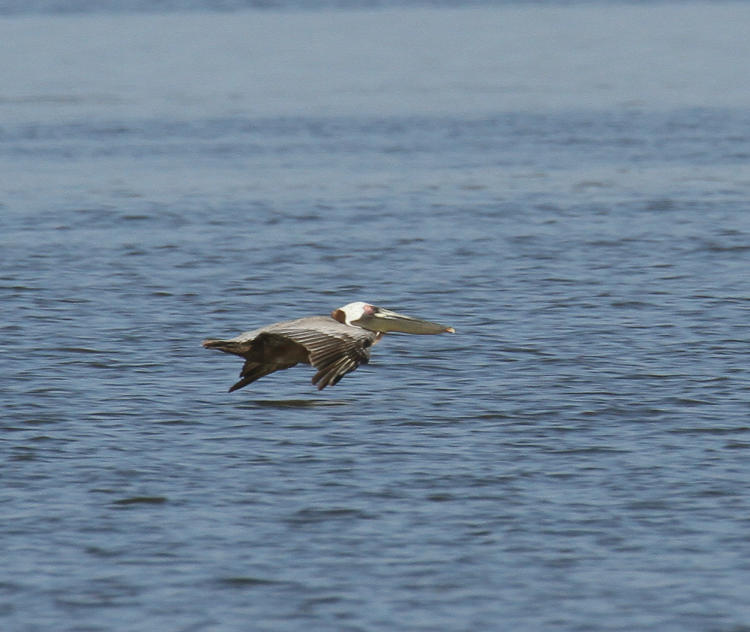
You’re not mistaken: that’s the bird’s shadow directly underneath, indicating that it was cruising only a handful of centimeters above the water’s surface. This was still quite distant, but I soon got the opportunity for a few closer images.
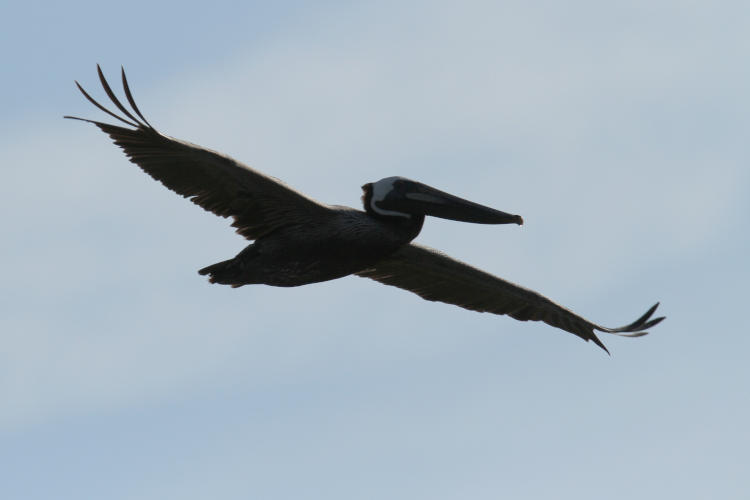
Still not the best light angle, but I liked the pose and the wingtips.
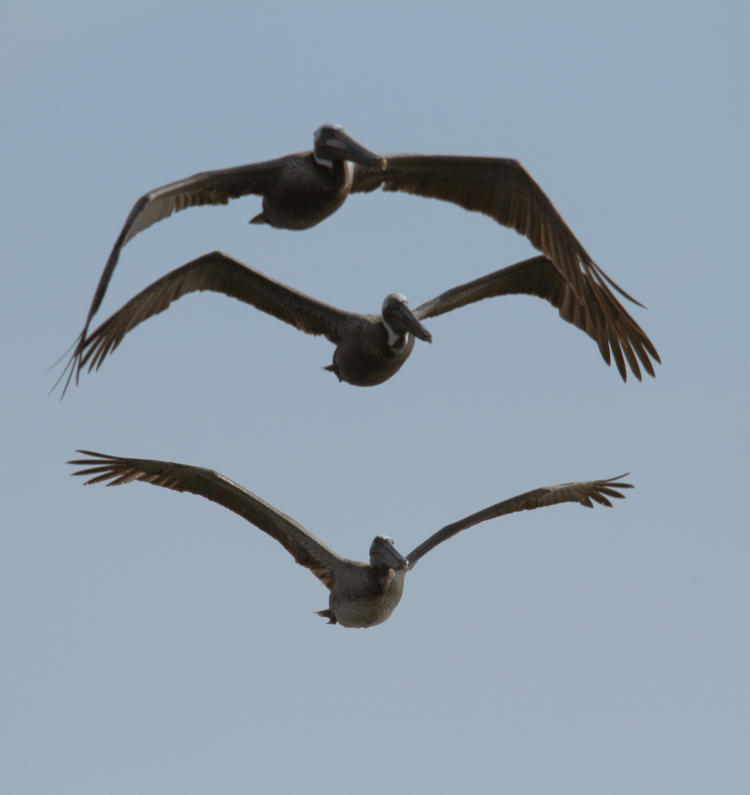
Telephoto compression is a cool effect sometimes – I’d gotten the 150-600mm out by now, and the forced perspective stacked this trio together. There were actually four, but one was being more protective of its personal space. I’m fairly certain this was a family unit, two of them being this year’s brood.
Now we get to the rails.
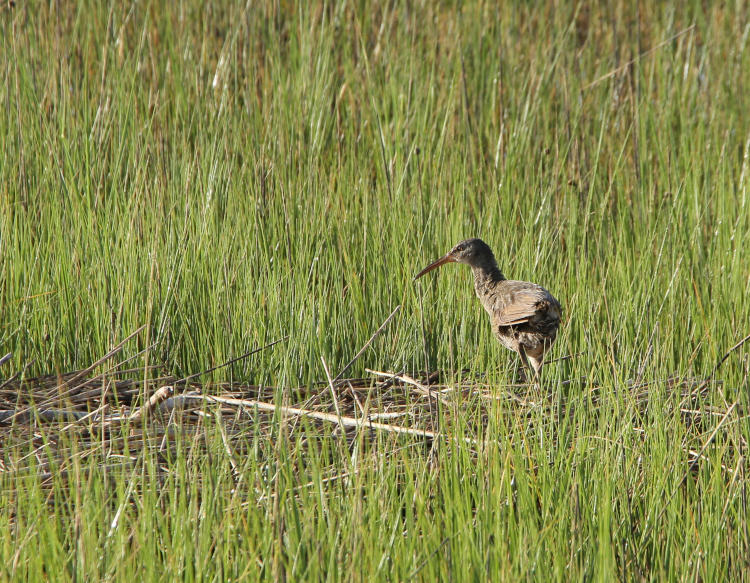
A pair of other photographers drew my attention to this clapper rail (Rallus crepitans,) which was sitting more-or-less under my nose – I’d been looking further out and not into the marsh grasses nearly at my feet. This was also during my initial review of the area, and the long lens was still back in the car, so this is at 135mm. The picture is deceptive, especially with that mound of dead reeds that the bird is standing on, because the grasses are knee-high and superbly dense – the rail is roughly the size of a green heron, or a little bigger than a crow, and the grasses stand twice as high. This was driven home when I began hearing the calls from what I took to be two different nests, plainly within 10 meters dead in front of me, yet nothing at all could be seen. But I did record it on my smutphone at least.
Clapper rails (Rallus crepitans) calling
The rail had vanished by the time I returned with the long lens, and I watched one appear and disappear a bit more distantly, but eventually I saw one up on another mound, industriously preening, and stalked it slowly to get some more detailed images.

There was no cover whatsoever, so I counted on slow movement and frequent pauses, and the rail would eye me warily for a few moments, especially if I trod noisily on a dried reed (which was completely unavoidable – the marsh was littered with them,) and then immediately go back to preening. This is where the Profiles shot, two posts back, came from of course.
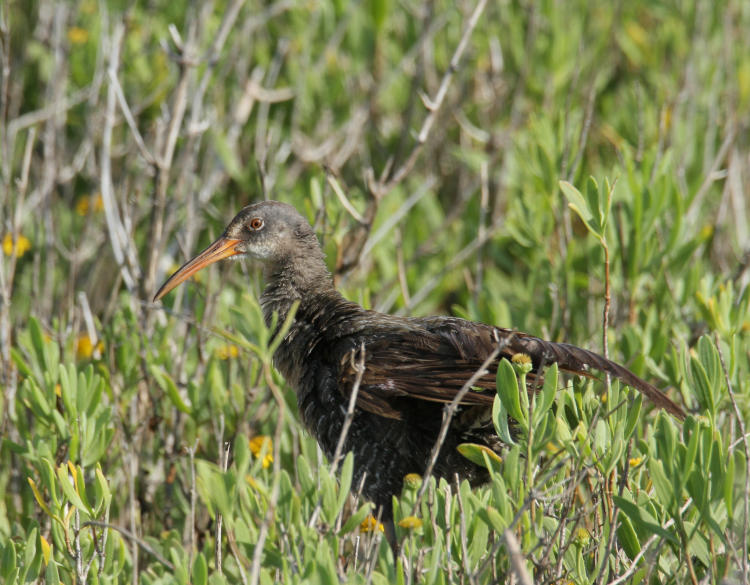
Eventually, I had a decent selection of images in good light, and I backtracked without spooking the rail away. I have no idea how long it will be before the young leave the nest, so I likely won’t be there for it (especially since this is about a three-hour drive away,) but at some point before too long I’ll be returning to see what can be found, regardless.
There was one other species that I stalked, getting better photos than I had ever before but still not what I wanted to get.
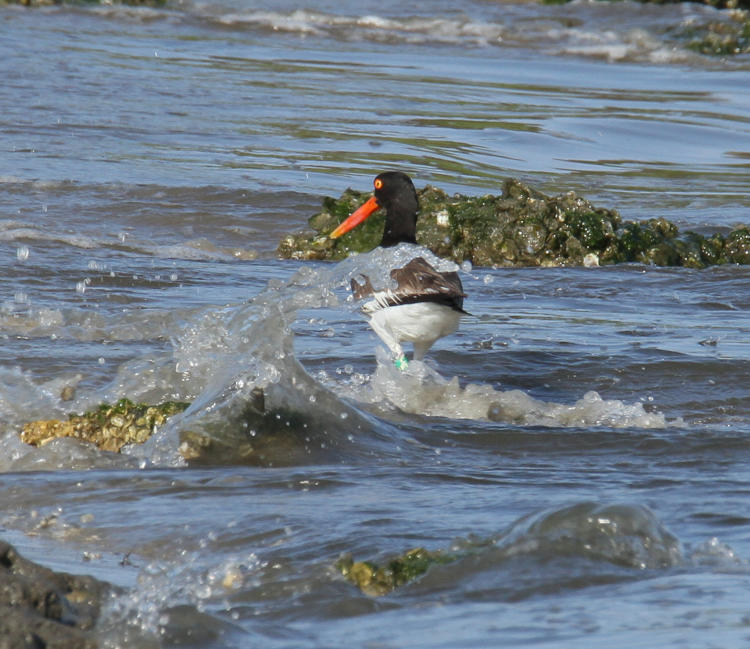
This is an American oystercatcher (Haematopus palliatus,) smaller than the rails at close to pigeon-sized, and considerably less tolerant of approaches than they are of splashing water. I tracked this one for at least fifty meters along a rock breakwater extending south from the point, never getting any closer, never sure if the bird was purposefully keeping its distance from me or if I was just keeping pace with its foraging path – I’d say the first was more likely. I really wanted a nice close portrait of those eyes and beak, but it was not to be.

I did, at least, get clear enough frames to see that the bird had been banded three times, so someone had gotten close to it, repeatedly.
But for a little over an hour of poking around, this wasn’t too bad of a photographic haul, worth getting a little muddy and a lot sweaty. It is not enough of a beach trip to sustain me, but it was a decent start anyway.




















































